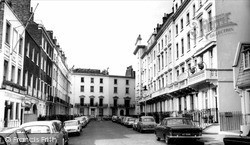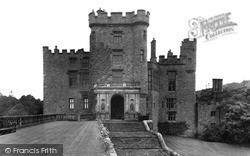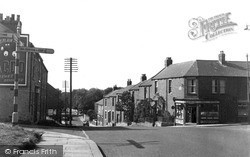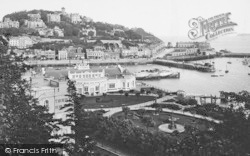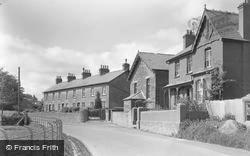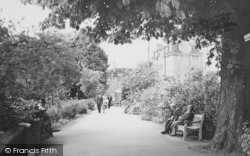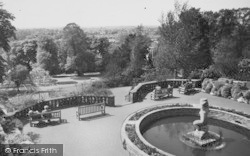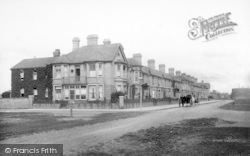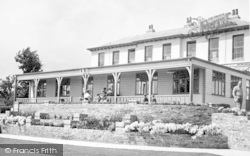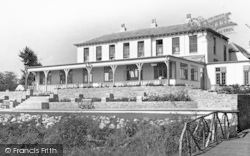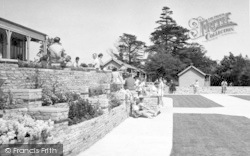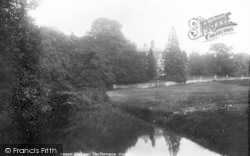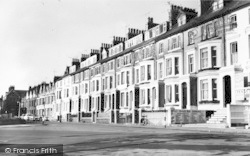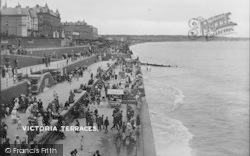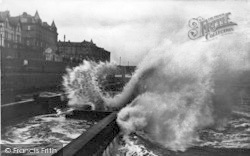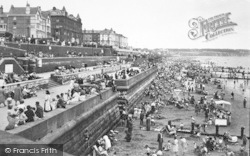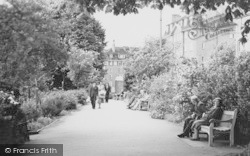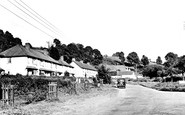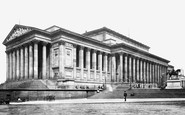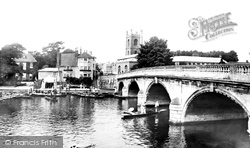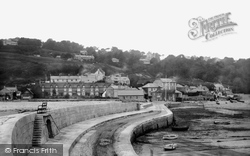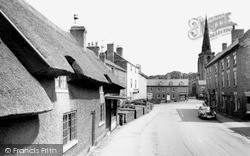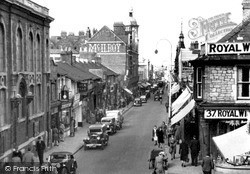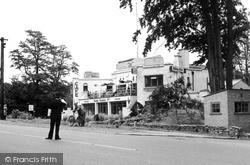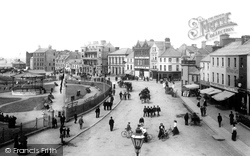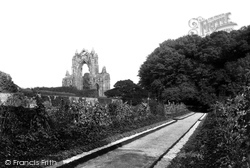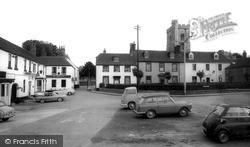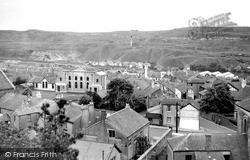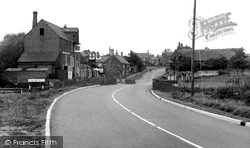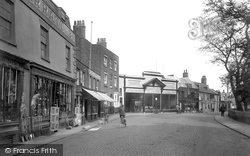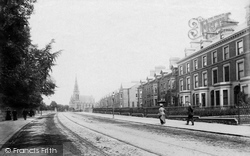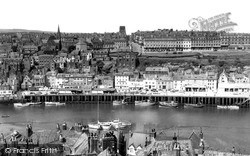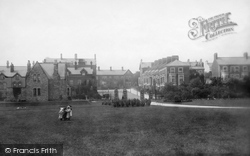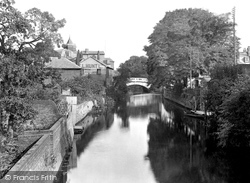Places
3 places found.
Those places high-lighted have photos. All locations may have maps, books and memories.
Photos
1,000 photos found. Showing results 421 to 440.
Maps
22 maps found.
Books
Sorry, no books were found that related to your search.
Memories
912 memories found. Showing results 211 to 220.
The 1980s
I originally lived in Blackhills Terrace, Horden and went to Blackhills Road Junior School and like my brothers and sister went on to Dene House Comprehensive. As a kid I did not really venture a lot into Peterlee, probably if I was ...Read more
A memory of Peterlee in 1983 by
Happy Days
I lived in Fron until I was 16. Lived at what was "Bourne Terrace". Went to Fron School then Llangollen Grammar School. Fond memories of working in my Uncles shop (Ethelstons) and delivering bread and groceries around the ...Read more
A memory of Froncysyllte in 1960 by
My House My Home
This is Southcombe Terrace, Axmouth. 6-13 Southcombe Terrace was designed by the architect Frederick Kett and built by Bert Warren around 1937/8 for the Stedcombe Estate. My parents, Rock and Olive Real, then in their mid ...Read more
A memory of Axmouth in 1955 by
Trying To Find Family
I am trying to trace anyone who has knowledge of Harold Bulter or his family who lived in Morley around 1957. I believe he could have lived on Albert Terrace although I cannot find this street when I visited recently. I can ...Read more
A memory of Morley in 1957 by
Rectory Cottage
To be honest the year is a little vague to me now, but it would have been around the mid-fifties that I have my first memories of Rectory Cottage. I was brought up in England, but my father John Elwyn was born there and my ...Read more
A memory of Llangattock in 1956 by
Portland So Many Memories !
I was born in 1950 and my first home was the flat beside the Regal cinema in Fortuneswell, Portland where my dad, Bob Mutch, was the projectionist. In 1953 we moved to Coronation Road on the Verne Common estate. I ...Read more
A memory of Portland in 1950 by
Darknell Family
This isn't a memory, more of a request. I am researching my family tree and a member of my family moved to the area in about 1880, his name was john Darknell and he married a Francis 'Fanny' Hamilton. He is recorded as living ...Read more
A memory of Gilfach Goch in 1880 by
A Bevin Boy
I was called up under the Bevin Scheme in April, 1944, and after a rather indifferent training at Annfield Plain Training Centre, was sent to the Hobson, as I was staying at the time in lodgings in Burnopfield with a Mrs. Crisp, ...Read more
A memory of Burnopfield in 1944 by
Locating Family
My father John Ormston lived in Coronation Terrace, Broomhill until he married in 1947. His mother was Harriett Hannah, whose maiden name was Tuck, but she had married Thomas Gray before my Grandfather. All I know about my ...Read more
A memory of North Seaton by
Fitzroy Street, Off Westderby Road. 1950s/60s
Did anyone live around here in the 1950s & 60s? My memories are of being sent to search out the sandstone on the Hollas so that my mum could do the steps. Going to the coal yard off Low Hill with ...Read more
A memory of Liverpool by
Captions
549 captions found. Showing results 505 to 528.
Sixty acres were transformed with terraced walks, as we see here. A magnificent palm house, lake and conservatory were also part of this lovely park.
In front is a row of modern shops, including a Co-operative store at the end by the truck, which had replaced a row of terraced houses.
Photograph looks from the Berkshire side, from the balcony of the Carpenter's Arms landing stage towards its rival, The Angel, whose tall 18th-century bay-windowed river elevation and riverside terrace
The picture, at low tide, looks northwards to Ozone Terrace, the Lifeboat Station (centre), the Coastguard Station and the Bonded Store, and along to the end of Cobb hamlet at Cobb Cliff (centre
Further on towards the parish church are a selection of early 19th-century houses, matched on the opposite side of the road by a later three-storey brick terrace.
The small shop fronts to the left were built out from the original terraced houses.
Further on towards the parish church are a selection of early 19th-century houses, matched on the opposite side of the road by a later three-storey brick terrace.
When it expanded, the hospital moved to houses that make up the three-storey terraces in School Street (B26706k, above).
The 600-capacity New Pavilion opened in May 1929 with attendant shops, tea lounges and terrace.
This was built in the 1930s under the influence of the Modern Movement, and it is a building of surpassing ugliness; it has a café with a terrace, the Waterfall, and below a Rover and Jaguar car
When it expanded, the hospital moved to houses that make up the three-storey terraces in School Street (shown in photograph B26706k).
When it expanded, the hospital moved to houses that make up the three-storey terraces in School Street (shown in photograph B26706k).
Their mark on the scene is the stone-built Tower House to the left of the terraces. It was built in 1637, soon after the charter from James the First brought the Scots to make the new plantations.
The path also led to the Dragon Steps (just visible on the left) and on to the Long Terrace and thence into the priory ruins themselves.
Cannon Green, consisting of Nos 1-3 Market Place, is an 18th-century terrace, named after the Russian cannon from the Crimean War which used to stand there before it was removed for scrap metal during
This view overlooking the town provides a classic view of industrial Wales, with the terraced houses and industrial workings which so typified the 19th century.
The picture is from the terraced Tennis Grounds; by Victorian times these were the town's main exercise area, after bowling fell out of favour and golf courses had yet to be constructed.
The village itself can be seen to be on a river terrace above flood level.
Now known as Church Terrace, this view shows the ironmonger's shop of Mr Barratt, later Barratt & Phillips.
Castleton Terrace, near the camera, is still there; it is typical of the handsome rows lining the road to enjoy views of the Cave Hill and the Lough.
Kirby's Hotel was at the other end of the Royal Hotel, beyond that we can just see South Terrace.
The row of houses stretching up to the Antrim Road has the name Jubilee Terrace, celebrating the Golden Jubilee of Queen Victoria in 1887.
The homes in the stone-built terrace (right) were once fitted with hand-looms, but the end cottage with the sign sold tyres at the time of the photograph.
Entering the town, you may see some of the following: several acres of Victorian housing, from railway-side terraces to detached, self-confident villas; a church with a nice green spire; a white
Places (3)
Photos (1000)
Memories (912)
Books (0)
Maps (22)




